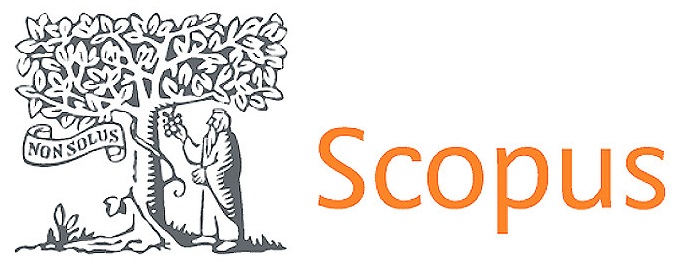Assessment of Chemical and Microbiological Pollutants in Poultry Fields
DOI:
https://doi.org/10.56294/saludcyt20251585Keywords:
Poultry farms, airborne dust, particulate matter (PM10, PM2.5), microbiological contaminants, Escherichia coli, Salmonella, environmental pollutantsAbstract
Introduction: The research aimed to assess the chemical and microbiological pollutants present in poultry fields, focusing on airborne dust composition, microbial contaminants, and potential health risks to both poultry and workers.
Methods: Dust samples were taken from poultry farms holding between 52,000 and 85,000 birds. Analysis of variance (ANOVA) was used to assess significant differences, and for pairwise comparisons, Tukey's post hoc test was applied.
Results: PM10 was the most prevalent dust fraction, with levels ranging from 1.2 to 16.m³. Farm 2 had significantly higher proportions of and than Farm 1 (p0.05). Settling dust contained pathogenic bacteria such as Enterococcus, Escherichia coli, and Salmonella, along with mold strains like Aspergillus penicilliosis (70.3%) and A. fumigatus, a known health risk. Cytotoxicity against chicken hepatocytes ranged from 8.7% to 31.2%, indicating minimal risk under tested conditions.
Conclusions: Poultry farms harbor significant levels of airborne dust and microbial contaminants, with variations between farms. The presence of pathogenic bacteria and fungi poses potential health risks, though cytotoxicity results suggest low immediate toxicity. Continuous monitoring and mitigation strategies are recommended to reduce exposure and improve air quality in poultry environments.
References
1. Ferone M, Gowen A, Fanning S, Scannell AG. Microbial detection and identification methods: Bench top assays to omics approaches. Comprehensive Reviews in Food Science and Food Safety. 2020 Nov;19(6):3106-29..https://doi.org/10.1111/1541-4337.12618
2. Imtiaz S, Alam A, Salman B. The role of the poultry industry on kidney and genitourinary health in Pakistan. Pakistan journal of medical sciences. 2020 Jan;36(1):S67.doi: 10.12669/pjms.36.ICON-Suppl.1718
3. Mohan P, Mala R. Comparative antibacterial activity of magnetic iron oxide nanoparticles synthesized by biological and chemical methods against poultry feed pathogens. Materials Research Express. 2019 Oct 16;6(11):115077..DOI 10.1088/2053-1591
4. Kabelitz T, Biniasch O, Ammon C, Nübel U, Thiel N, Janke D, Swaminathan S, Funk R, Münch S, Rösler U, Siller P. Particulate matter emissions during field application of poultry manure-The influence of moisture content and treatment. Science of the Total Environment. 2021 Aug 1;780:146652..https://doi.org/10.1016/j.scitotenv.2021.146652
5. Wychodnik K, Gałęzowska G, Rogowska J, Potrykus M, Plenis A, Wolska L. Poultry farms as a potential source of environmental pollution by pharmaceuticals. Molecules. 2020 Feb 25;25(5):1031..https://doi.org/10.3390/molecules25051031
6. Kribi-Boukhris SE, Boughattas I, Zitouni N, Helaoui S, Sappin-Didier V, Coriou C, Bussiere S, Banni M. Ecotoxicity of trace elements to chicken GALLUS gallus domesticus exposed to a gradient of polymetallic-polluted sites. Environmental Pollution. 2020 Oct 1;265:114831.https://doi.org/10.1016/j.envpol.2020.114831
7. Hartmann J, van Driezum I, Ohana D, Lynch G, Berendsen B, Wuijts S, van der Hoek JP, de Roda Husman AM. The effective design of sampling campaigns for emerging chemical and microbial contaminants in drinking water and its resources based on literature mining. Science of the Total Environment. 2020 Nov 10;742:140546..https://doi.org/10.1016/j.scitotenv.2020.140546
8. Biswal BK, Vijayaraghavan K, Tsen-Tieng DL, Balasubramanian R. Biochar-based bioretention systems for removal of chemical and microbial pollutants from stormwater: A critical review. Journal of hazardous materials. 2022 Jan 15;422:126886.https://doi.org/10.1016/j.jhazmat.2021.126886
9. Yaashikaa PR, Kumar PS, Varjani S, Saravanan AJ. A critical review on the biochar production techniques, characterization, stability and applications for circular bioeconomy. Biotechnology reports. 2020 Dec 1;28:e00570..https://doi.org/10.1016/j.btre.2020.e00570
10. Garvey M. Food pollution: A comprehensive review of chemical and biological sources of food contamination and impact on human health. Nutrire. 2019 Jul 3;44(1):1..https://doi.org/10.1371/journal.pone.0183641.
11. Gbadebo AM. Assessment of quality and health risk of peri-urban groundwater supply from selected areas of Abeokuta, Ogun State, Southwestern Nigeria. Environmental Geochemistry and Health. 2021 Jul;43(7):2743-55.. https://doi.org/10.1007/s10653-020-00746-5
12. Esperón F, Albero B, Ugarte-Ruíz M, Domínguez L, Carballo M, Tadeo JL, del Mar Delgado M, Moreno MÁ, de la Torre A. Assessing the benefits of composting poultry manure in reducing antimicrobial residues, pathogenic bacteria, and antimicrobial resistance genes: a field-scale study. Environmental Science and Pollution Research. 2020 Aug;27(22):27738-49..https://doi.org/10.2760/020485
13. Chernikova O, Pityurina I, Terentyev A, Rakhmaev E. Analysis of safety indicators for poultry products produced in subsidiary farms in penitentiary facilities..https://doi.org/10.15159/AR.20.126
14. Younis SA, Kim KH, Shaheen SM, Antoniadis V, Tsang YF, Rinklebe J, Deep A, Brown RJ. Advancements of nanotechnologies in crop promotion and soil fertility: Benefits, life cycle assessment, and legislation policies. Renewable and Sustainable Energy Reviews. 2021 Dec 1;152:111686..https://doi.org/10.1016/j.rser.2021.111686
15. Rathi BS, Kumar PS, Vo DV. Critical review on hazardous pollutants in water environment: Occurrence, monitoring, fate, removal technologies and risk assessment. Science of The Total Environment. 2021 Nov 25;797:149134.https://doi.org/10.1016/j.scitotenv.2021.149134
16. Ndirangu SM, Liu Y, Xu K, Song S. Risk evaluation of pyrolyzed biochar from multiple wastes. Journal of Chemistry. 2019;2019(1):4506314.. https://doi.org/10.1155/2019/4506314
Downloads
Published
Issue
Section
License
Copyright (c) 2025 Nabakrushna Praharaj, Kanika Seth, Simranjeet Singh, Dikshit Sharma, Syed Farhan, Jagdish Gohil (Author)

This work is licensed under a Creative Commons Attribution 4.0 International License.
The article is distributed under the Creative Commons Attribution 4.0 License. Unless otherwise stated, associated published material is distributed under the same licence.



